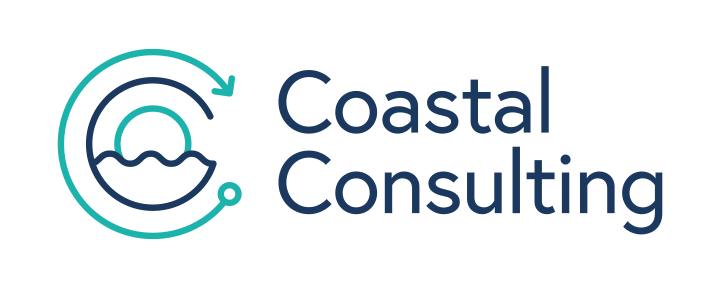Share this
Integration Filter Update Beta
by Maura Barton on July 2022
One of the biggest headaches for teams using the HubSpot Salesforce integration is managing records. Many times, a faulty integration setup can result in countless issues with contact records — from duplicates to missing data.
For others, dealing with different types of contacts (like vendors, partners, prospects, and clients) further complicates things. Plus, these types of contact don’t necessarily need to be in your CRM.
Thankfully, there’s now an integration update beta that allows you to filter Salesforce records before importing them into HubSpot so you only bring the contacts that matter to your sales and marketing teams — leaving the others to be safely stored elsewhere without cluttering your CRM.
This new filter system can make your data hygiene even easier by only adding recent, updated contacts to HubSpot. Let’s dive in.
Understanding the old way of importing contacts from Salesforce to HubSpot
Before the new integration filter update, you needed to use a combination of Salesforce Profiles and Roles called Selective Sync to filter records based on specific criteria.
To start, you needed to create an Integration User in HubSpot who’d manage your connection between HubSpot and Salesforce. Next, you’d have to create the same profile in Salesforce and manually adjust sharing permissions.
The process was incredibly complex and required a user to have technical Salesforce knowledge. Now, the new filters make the import process simpler and more user-friendly for non-technical users. Here’s how.
There are now two available filters when importing contacts from Salesforce to HubSpot
One of the first steps to your data hygiene policy is establishing a reasonable amount of time to preserve contacts. In many cases, a contact that’s been inactive for more than 6 months can be added to a re-engagement campaign and discarded if they don’t reply. Ie, if they haven’t opened or engaged with your emails in 6-12 months, it may be time to cut them loose.
With the integration filter update, you can choose contacts created or updated within a fixed period of time and bring only those records into HubSpot. Here’s how it works:
First, once you install the HubSpot Salesforce integration, you’ll be prompted to import contacts from Salesforce via the HubSpot import tool. In HubSpot, you’ll go to Contacts > Contacts > Import > Start an Import > Integrations > Salesforce records.
From here, you’ll select the type of object you want. Once you select the type of object (everything, leads, contacts, leads & contacts, accounts, opportunities, tasks, or campaigns), you’ll be able to filter by create date or update date. This is what each does:
- Create date: Use this filter to import Salesforce records according to when they were first created. For example, import records that were created starting on January 1st, 2015. When you select this option, any records created before the set date will be left out.
- Update date: Use this filter to import Salesforce records according to when a property or engagement on the record was last changed or added. For example, you can choose to only import records that have been modified within the past year.
Date options include before or after a date, equal to a date, and between specific dates. Once you set your filter, just review the Confirm Import screen and confirm to start the process. Just note that the more records you import, the longer the process will take.
The HubSpot Salesforce Integration Filter Update simplifies your data hygiene
In the past, implementing the HubSpot Salesforce integration brought all of your contacts from Salesforce over to HubSpot. But having all of your contacts in your CRM isn’t the most effective use of your contact allotment. A cluttered list:
- Can quickly increase your costs as HubSpot’s marketing contact increments quickly add up.
- Makes personalization and segmentation nearly impossible, which affects your marketing performance.
- Affects your marketing and sales numbers, messing up your chances of getting accurate reporting on metrics like engagement and conversions.
Now, you can optimize your import by bringing only the most relevant, up-to-date records to HubSpot so that your team has the data they need to make impactful business decisions and drive the growth you’re after.
At Coastal Consulting, we’re excited to see new resources like this integration filter update to simplify your HubSpot Salesforce integration deployment. If you’re ready to fully leverage your tech stack, enroll in our highly anticipated HubSpot Salesforce Integration course — the first of its kind to show you the ins and outs of this powerful integration so you don’t need to rely on partners and agencies to run your CRM.
Share this
- April 2025 (1)
- March 2025 (1)
- January 2025 (3)
- December 2024 (2)
- September 2024 (2)
- August 2024 (2)
- July 2024 (3)
- June 2024 (1)
- May 2024 (1)
- February 2024 (1)
- January 2024 (1)
- December 2023 (1)
- November 2023 (1)
- October 2023 (5)
- September 2023 (2)
- June 2023 (1)
- April 2023 (2)
- March 2023 (2)
- February 2023 (5)
- January 2023 (8)
- December 2022 (7)
- November 2022 (10)
- October 2022 (2)
- September 2022 (11)
- August 2022 (4)
- July 2022 (2)
- June 2022 (3)
- May 2022 (8)
- April 2022 (6)
- March 2022 (4)
- February 2022 (4)
- January 2022 (6)
- December 2021 (4)
- November 2021 (4)
- October 2021 (4)
- August 2021 (1)
- July 2021 (7)
- June 2021 (15)
- May 2021 (1)
- March 2021 (2)
